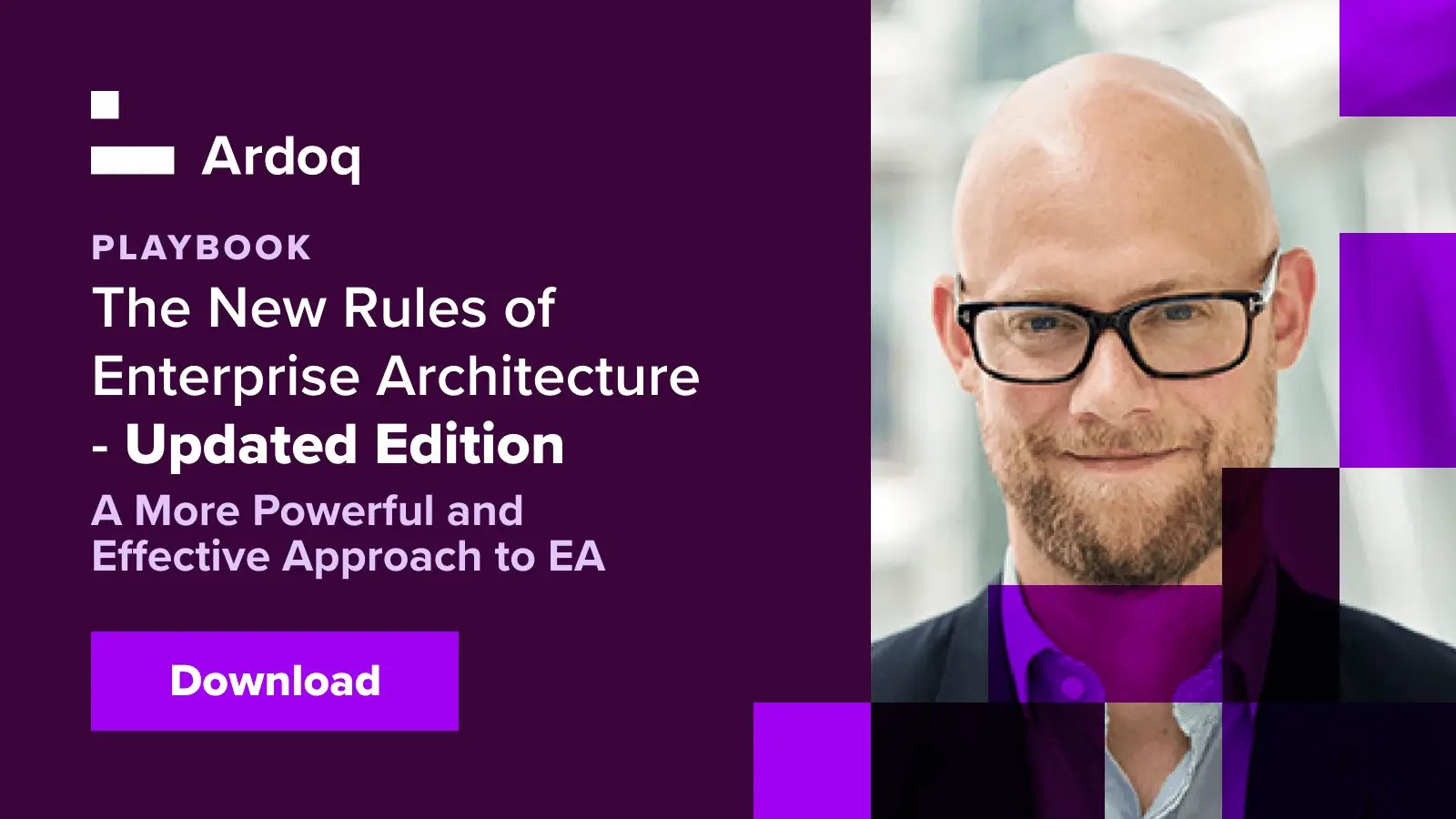Everyone is talking about #DigitalTransformation, but how often do you feel like people are actually saying what it is and, better yet, how to succeed at it?
With digital transformation almost becoming a buzzword in itself, discussions and knowledge sharing can quickly turn from inspiring guidance to eye-rolling jargon poetry.
For Enterprise Architects, in particular, buzzwords are a double-edged sword. You're not only responsible for triggering organizational change, but you also have to make sure that all of your stakeholders are constantly updated.
It can feel challenging to explain what we do without all the jargon & trend words, but it's just as challenging for stakeholders to know what these terms mean without more context (and in a high-pressured, high-level status meeting, giving context isn't a luxury we can often afford).
 Some of the Most Common Digital Transformation Buzzwords Right Now
Some of the Most Common Digital Transformation Buzzwords Right Now
So, here are some of the biggest go-to buzzwords many of us are hearing in this sphere right now, what they mean, and what they really mean:
💬Digital Transformation: The process of using digital technologies to create new, or modify existing, business processes, cultures, and customer experiences to meet changing business and market requirements.
OK, but what does it mean? Remember that song "Video Killed The Radio Star"? It's smartphones changing how we communicate with each other, websites changing how we interact with customers, Spotify changing how we get music... Plain and simple, it's technology changing how we do things, how our customers and stakeholders interact with us, and how we service them.
💬Agile: A project-management methodology (or movement), usually in software development, that encourages short-term projects, constant reevaluation, and adaption.
What are we really saying here? Agile is the equivalent of using Google Maps during a long road trip. It's pretty much a company's ability to adapt to whatever might happen while it makes its changes.
💬Automation: The technique of making an apparatus, a process, or a system operate automatically.
Tell it to me straight. It's basically teaching a machine (usually a computer program or an application) how to do something by itself efficiently and instinctively. So we can spend more time on strategy and optimization.

💬Digital Twin: A virtual model of a process, product, or service that enables data analysis and monitoring.
In layman's terms? It's a computer-generated model of just about anything you can think of (buildings being constructed, planes flying, people walking to the store, and so on). A place to test and analyze before changing the real thing.
💬Eco-system: The web of organizations (suppliers, distributors, customers, competitors, government agencies etc.) involved in the delivery of a specific product or service.
Putting it simply. It's the environment that everybody and everything exists inside. Imagine a playground that everybody plays in. Better yet, think of "The Sims", but the difference is you don't have complete control over everything (but I'm sure some people wish they did).
💬Innovation: The introduction of something new or the process of updating something that already exists.
An all-time favorite, but what are we talking about here? Innovation is the same as experimentation. It's using different approaches to solving problems or completing tasks. For example (warning: controversial content ahead), using pineapples to make a pizza taste better.
💬Legacy EA: The original Enterprise Architecture frameworks that (depending on your preference) follow their own structured approach to change management.
Real-talk? It's Enterprise Architecture, version 1.0 (or "old-school EA", as some might call it). While it does get the job done, it's not as dynamic or intuitive as version 2.0 with endless streams of data and new tooling capabilities.
💬Roadmaps: A strategic plan that defines a specific goal and includes the major steps to reaching it.
Saying it like it is: It's a step-by-step plan on how to get a job done. Like the instructions that come with your IKEA dining table, it's how to get from A to B or the current state (sitting on the floor with your dinner) to your future state (luxury Scandi-style dining).
💬Shadow IT: Information technology systems implemented by departments other than the primary IT department itself to address issues within the IT department's internal system.
Run that by me again? People or teams using IT systems, tools, apps, etc. without getting permission from your IT department. Hey, if you've got a problem, fix it yourself, right? Either a way to stay innovative and productive or create anarchy, the jury is out.
💬 Strategic Agility: The ability to create new products for new markets that reach new customers.
What we're talking about: Instead of making your products or services bigger, better faster, maybe it's time for something new altogether. If operational agility is about making a better candle; Thomas Edison pursued Strategic Agility by making an electric light bulb.
Psst! Why do even the most well-planned projects still fail? Find out why and how to fully align your strategy and execution with this free white paper:
Buzzwords have their uses, but can also be an absolute pain. Everyone at Ardoq can swear to that, although we tend to disagree on which one of these is the best, worst, most accurate and/or least significant (we all have our favorites).
Which buzzwords do you love, hate or love to hate?Join the discussion on this LinkedIn post.
 Ardoq
This article is written by Ardoq as it has multiple contributors, including subject matter experts.
Ardoq
This article is written by Ardoq as it has multiple contributors, including subject matter experts.





/Logos/Ardoq/RGB_Ardoq_Logo_Stacked_White_Monochrome%201.png?width=80&height=77&name=RGB_Ardoq_Logo_Stacked_White_Monochrome%201.png)

